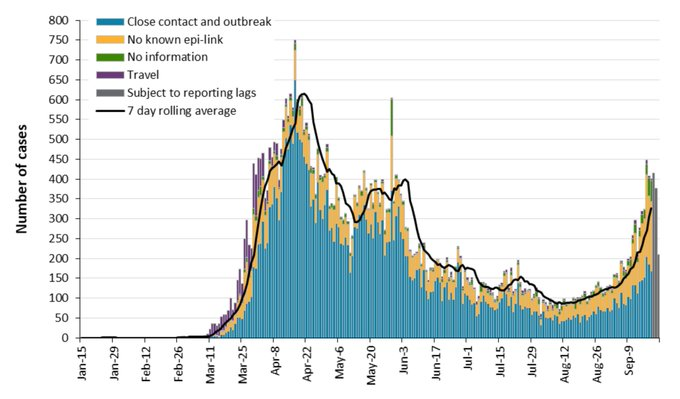Are you an academic clinician or trainee with a career focus in #QI?
Are you interested in implementing QI initiatives in an academic teaching hospital/clinic settings?
Apply for EQUIP - QI certificate program offered by @CQuIPS
(Deadline Mar 27, ‘20)
cpd.utoronto.ca/equip
Are you interested in implementing QI initiatives in an academic teaching hospital/clinic settings?
Apply for EQUIP - QI certificate program offered by @CQuIPS
(Deadline Mar 27, ‘20)
cpd.utoronto.ca/equip
Program format:
1) Two 3-day in-person sessions in Toronto, Canada
2) Longitudinal #QI project
3) Webinars for participants to receive feedback on their projects
4) Personalized coaching from expert program faculty
1) Two 3-day in-person sessions in Toronto, Canada
2) Longitudinal #QI project
3) Webinars for participants to receive feedback on their projects
4) Personalized coaching from expert program faculty

Learn from the best — here are just a few of the expert @CQuIPS faculty you will interact with if you enroll in EQUIP
cpd.utoronto.ca/equip/faculty/…
cpd.utoronto.ca/equip/faculty/…
Dr. Kaveh Shojania (@kgshojania)
International patient safety and quality improvement expert, co-chair of the NPSF “Free from Harm — 15 yrs after To Err is Human” expert panel, and Editor in Chief at @BMJ_Qual_Saf
International patient safety and quality improvement expert, co-chair of the NPSF “Free from Harm — 15 yrs after To Err is Human” expert panel, and Editor in Chief at @BMJ_Qual_Saf

Dr. Olivia Ostrow (not on Twitter)
Patient safety lead for the Division of Paediatric Emergency Medicine at @SickKidsNews and Paediatric Lead for @ChooseWiselyCA Antibiotics Wisely initiative
Patient safety lead for the Division of Paediatric Emergency Medicine at @SickKidsNews and Paediatric Lead for @ChooseWiselyCA Antibiotics Wisely initiative

Dr. Christine Soong (@ChristineSoong)
Hospitalist Director at @SinaiHealth and Cross-Institutional QI Implementation Director for @hvpaa, author of several high-value care implementation guides in @JAMAInternalMed
Hospitalist Director at @SinaiHealth and Cross-Institutional QI Implementation Director for @hvpaa, author of several high-value care implementation guides in @JAMAInternalMed

Dr. Trey Coffey (@trey_coffey_TO)
Medical Officer for Patient Safety at @SickKidsNews, site-lead for only non-US site in the IPASS handoff study, and Associate Clinical Director for @sps4kids — patient safety network of 100+ children’s hospitals across North America
Medical Officer for Patient Safety at @SickKidsNews, site-lead for only non-US site in the IPASS handoff study, and Associate Clinical Director for @sps4kids — patient safety network of 100+ children’s hospitals across North America

Dr. Edward Etchells (not on Twitter)
Medical Director of Information Services at @Sunnybrook
His original study “Unintended Medication Discrepancies at the Time of Hospital Admission” in @JAMAInternalMed contributed to establishing med rec globally as a #ptsafety best practice
Medical Director of Information Services at @Sunnybrook
His original study “Unintended Medication Discrepancies at the Time of Hospital Admission” in @JAMAInternalMed contributed to establishing med rec globally as a #ptsafety best practice

Dr. Amanda Mayo (@AmandaMayo)
A physiatrist and Clinician in Quality and Innovation at @Sunnybrook (St. Johns Rehab) with a background in clinical engineering with a focus on human factors engineering and usability of health technology.
A physiatrist and Clinician in Quality and Innovation at @Sunnybrook (St. Johns Rehab) with a background in clinical engineering with a focus on human factors engineering and usability of health technology.

Dr. Eric Monteiro (not on Twitter)
An otolaryngologist at @SinaiHealth with an interest in developing and evaluating quality indicators for various conditions in the field of Otolaryngology-Head & Neck surgery
An otolaryngologist at @SinaiHealth with an interest in developing and evaluating quality indicators for various conditions in the field of Otolaryngology-Head & Neck surgery

Marie Pinard (not on Twitter)
Director of Quality, Safety & Patient Experience at @WCHospital with prior background in front-line nursing, she spearheaded the development of a robust process for ethical oversight of QI projects at @SickKidsNews & has reviewed over 1000 proposals
Director of Quality, Safety & Patient Experience at @WCHospital with prior background in front-line nursing, she spearheaded the development of a robust process for ethical oversight of QI projects at @SickKidsNews & has reviewed over 1000 proposals

Dr. Adina Weinerman (@AdinaWeinerman)
Medical Director of Quality and Patient Safety at @Sunnybrook and graduate of the inaugural EQUIP program! Has a strong academic interest in resource stewardship and is the chair of the @CSIMSCMI Choosing Wisely Committee
Medical Director of Quality and Patient Safety at @Sunnybrook and graduate of the inaugural EQUIP program! Has a strong academic interest in resource stewardship and is the chair of the @CSIMSCMI Choosing Wisely Committee

Leahora Rotteau (not on Twitter)
Program manager at @CQuIPS with expertise in using qualitative methods to understand the context of quality improvement implementation
Program manager at @CQuIPS with expertise in using qualitative methods to understand the context of quality improvement implementation

Oh, and me (Dr. Brian Wong - @Brian_M_Wong)
Director of @CQuIPS with a strong interest in QIPS education, chaired the expert working group that advised on the integration of QIPS competencies into @Royal_College CanMEDS 2015 competency framework
Director of @CQuIPS with a strong interest in QIPS education, chaired the expert working group that advised on the integration of QIPS competencies into @Royal_College CanMEDS 2015 competency framework
• • •
Missing some Tweet in this thread? You can try to
force a refresh









